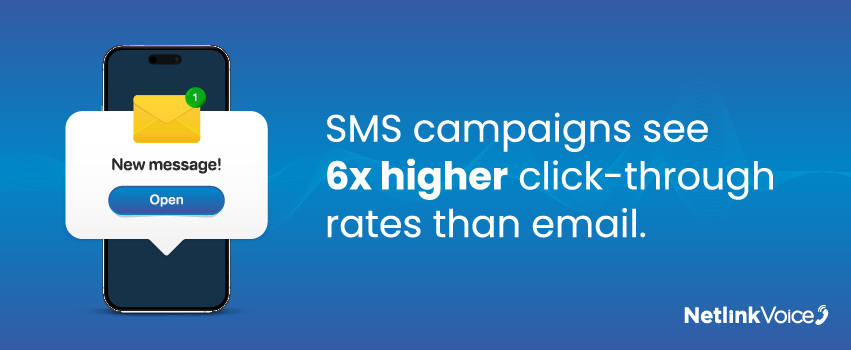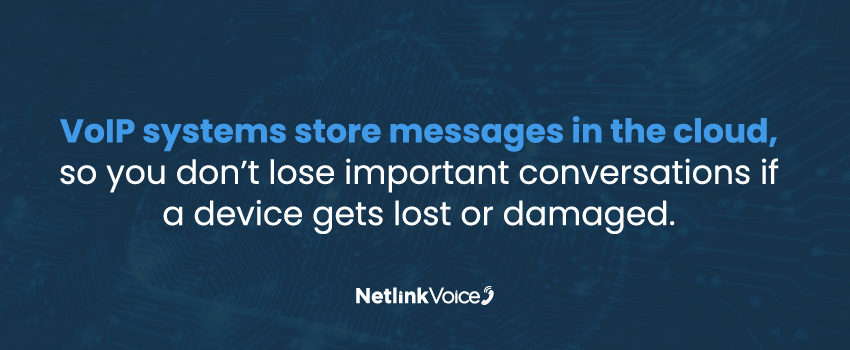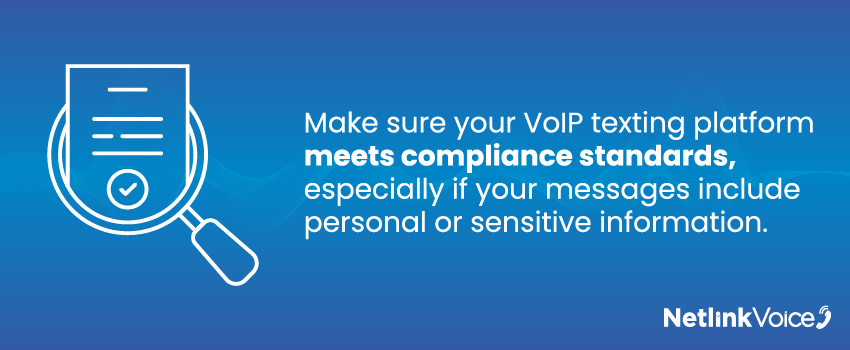Business communication has come a long way. These days, it’s not just about making calls – people expect to connect in the ways that feel easiest and most natural. For many customers and employees, that means sending a quick text.
Texting has become the go-to method for sharing updates, answering questions, and keeping conversations moving without the delays that come with email or phone tag. In fact, a 2025 report found that texting is the top mobile activity for 83% of consumers,1 which shows just how important it is for businesses to incorporate texting into their communication strategies.
VoIP texting, also known as VoIP with SMS or VoIP with texting, lets businesses send and receive text messages over the internet. It’s a practical, cost-effective approach that helps teams respond faster and communicate more effectively with both customers and colleagues.
In this blog, we’ll look at how VoIP texting works, what it can do for your organization, and some best practices to help you get the most value from this technology.
Can You Text a VoIP Number?
Yes, you can text a VoIP number – as long as that number is SMS-enabled.
Once a VoIP number is SMS-enabled, it works just like a mobile number when it comes to texting. You can send and receive messages from a desktop, web portal, or even a smartphone app, no separate texting plan required.

How Does VoIP Texting Work?
VoIP texting routes SMS or MMS messages over the internet rather than traditional cellular networks. When you send a text to an SMS-enabled VoIP number, the message travels through a cloud platform that handles the delivery.
Here’s a quick breakdown of how VoIP SMS works:
- A user types a message in the VoIP platform from a computer or mobile device.
- The platform converts and routes the message through its SMS gateway.
- The recipient gets the message on their phone just like a regular text.
- If they reply, it’s routed back through the VoIP platform to the original sender.
Since VoIP texting doesn’t rely on a SIM card or mobile carrier, you can send and receive messages anywhere with an internet connection via the same platform you manage other communication channels in.
VoIP Phone With Text Messaging Use Cases
Adding texting to your VoIP system can improve how your business communicates, both internally and externally. Here are a few ways companies use VoIP texting every day:
Customer Service
Support teams can use a VoIP phone with text messaging to answer questions, send appointment reminders, or follow up with customers. It’s often faster and more convenient than email or voice calls, especially for quick updates.
Sales Outreach
Texting leads and prospects makes sales outreach feel more personal and less intrusive. Sales teams can use pre-approved templates to stay compliant while still keeping interactions conversational.

Marketing Campaigns
SMS campaigns see 6x higher click-through rates than email.2 VoIP systems that support mass texting campaigns make it easy for businesses to share promotions, send event reminders, or drive engagement – all managed from your phone platform.
Internal Communication
For distributed teams or frontline employees without access to email, VoIP texting provides a fast, informal way to share updates. And because messages flow through the same dashboard you use for calls, everyone stays on the same page.
5 Benefits of VoIP With SMS
VoIP texting offers several advantages over traditional texting or voice-only solutions, such as:
1. Unified Communications
Adding SMS capabilities to a VoIP phone system combines voice, video, and text messaging into a single platform, reducing communication silos and giving teams one place to manage customer interactions.
2. Device Flexibility
Because VoIP SMS is cloud-based, employees can send and receive texts from anywhere – on their desktop, tablet, or smartphone. No one has to be tied to their desk phone to stay responsive.
3. Business Continuity
VoIP systems store messages in the cloud, so you don’t lose important conversations if a device gets lost or damaged. Your team can pick up right where they left off from any connected device.

4. Professionalism
Unlike traditional mobile texting, VoIP texting lets you set standards and controls for how your team communicates. You can apply your branding, create message templates, and monitor activity to keep communication professional and consistent.
5. Cost Efficiency
VoIP with SMS eliminates the need to pay for additional mobile plans or texting services, saving money and reducing the number of vendors you have to manage.
VoIP Text: Things To Consider Before Getting Started
Before rolling out VoIP texting, consider how you’ll use it and what features you’ll need from your platform. Factors to keep in mind include:
SMS and MMS Support
Some providers only offer SMS (basic text messaging), while others include MMS (multimedia messaging that can support pictures, videos, and attachments). Think about the types of content your team will be sending to choose the right plan.
Number Porting
If you want to use your existing business number for texting, confirm with your provider that it can be SMS-enabled and ported into the VoIP system.
Regulatory Compliance
If your messages include personal or sensitive information, you’ll need to ensure your VoIP texting platform meets compliance standards like HIPAA, GDPR, or TCPA. It’s also important to get proper consent when sending marketing texts.
Analytics and Reporting
Look for platforms that offer message tracking, delivery confirmation, and reporting features. This data helps you see what’s working in your text communications and where your strategies can be improved.

Best Practices for Using VoIP With Texting
VoIP texting is a powerful tool, but it works best when used thoughtfully. Here are a few best practices to help you get started:
- Be responsive. Customers expect fast replies when they text. If you can’t answer right away, consider using automated messages to confirm you’ve received their inquiry.
- Keep messages concise. Texting is best for quick updates or short conversations. For complex issues, direct users to a phone call or email.
- Personalize when possible. Use the recipient’s name and reference past conversations to make your messages feel more genuine.
- Use templates for consistency. Standardized messages ensure your team stays consistent and compliant while saving time.
- Track and analyze. Review your texting metrics regularly to optimize performance and identify trends.
A little planning upfront can go a long way toward making sure your texts are effective and appreciated.
Unify Your Communications With Netlink Voice
If your business already uses VoIP for calls, adding texting is a natural next step. It offers another way to connect with customers, share updates, and keep your teams in sync, no matter where they’re working.
At Netlink Voice, we help businesses streamline their communications with scalable VoIP and UCaaS solutions that support voice, video, and text – all on a single, scalable platform. Our feature-rich ConnectWare UCaaS platform includes robust texting capabilities backed by real-time wallboards and reporting features, so you can take your business texting to the next level.
Ready to get started? Contact us today to learn more about how VoIP with texting can elevate your communication strategies.
Sources:

